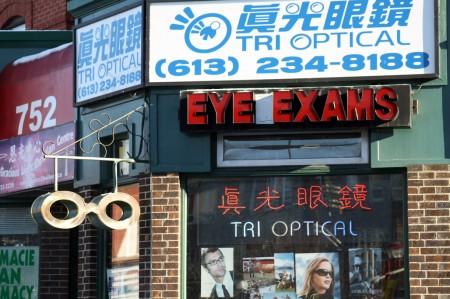
One way in which colours are categorized is according to the temperatures at which materials emit them, when heated in a vacuum. The phenomenon of warm things emitting light can be observed readily: for instance, when a bar of iron is heated from red, to orange, to yellow, to white. Some of the key colours photographically are those akin to the light of the sun around noon (about 5500° Kelvin) and the light from incandescent bulbs (about 3300° K). Just as with the heated iron bar, the hotter the light source, the ‘cooler’ the temperature appears: ranging from reds and oranges at low temperatures up to greens and blues. This can be a bit confusing, since the colours artists describe as ‘warm’ are actually produced by low temperatures, and vice versa.
Virtually all digital cameras have the ability to adapt to different colour temperatures. This is important because our eyes generally make the correction automatically. Looking at a scene under fluorescent lights, it doesn’t seem as green to us as it really is – and will appear on film or an uncalibrated digital sensor. Exactly how you set the white balance on your camera varies by model and manufacturer, but it is worth checking the manual over.
In addition to being used to correct for the dominant type of lighting in a scene, colour balance can be set so as to create a desired look that may not have been present in the original scene. For example, intentionally using the white balance for warm light (low temperature) in a scene with cool light (high temperature) exaggerates the cool light in the scene. As a result, you get a very cool looking photo like this one. By contrast, intentionally using the white balance for cool light (high temperature) in a scene that already has fairly warm light will exaggerate the warm light, as with this photo.
For users of Canon cameras, here is an easy way to try this out:
- First, head out on a cold winter’s day and find a wintery looking scene.
- Then, go into the white balance setting for your camera. If you have a point and shoot camera, this is normally done by setting the control dial on your camera to ‘P,’ then pressing the ‘Func. Set’ button in the middle of the wheel on the back. Scroll down once and you should be in the white balance menu. Press the ‘right’ button until you have ‘Tungsten’ selected.
- If you have a digital SLR, there is usually a dedicated white balance button on the back, labelled ‘WB.’
- Shoot the winter scene with that setting, and you will get a cool blue looking result.
- Secondly, try shooting a warmish scene (such as one taken around sunset outside) with the camera set to ‘Cloudy.’ That will make it look even warmer, which is sometimes attractive.
When you choose a colour balance setting on your digital camera, you are telling it how to process the raw data from the sensor into a JPG image. Since the raw data isn’t normally retained, this is an irreversible choice (though it is possible to approximate a white balance change using software like Photoshop). For cameras capable of recording the data from the sensor as a RAW file, you will be able to select whatever white balance you like after the photo has been taken. Thanks to CHDK, a great many Canon cameras (including inexpensive point and shoot models) can be given this capability.
Incidentally, the matter of what wavelength of light is emitted by objects of different temperatures is a key part of the physics of climate change. One neat thing about science is the way you often run into aspects of one field that are relevant somewhere very different.


